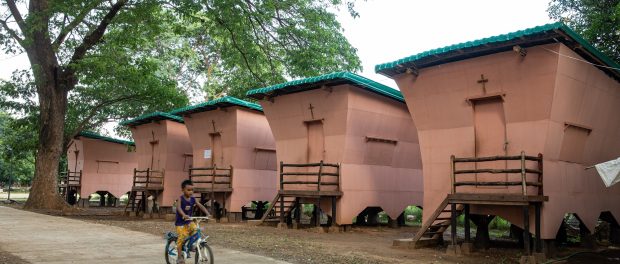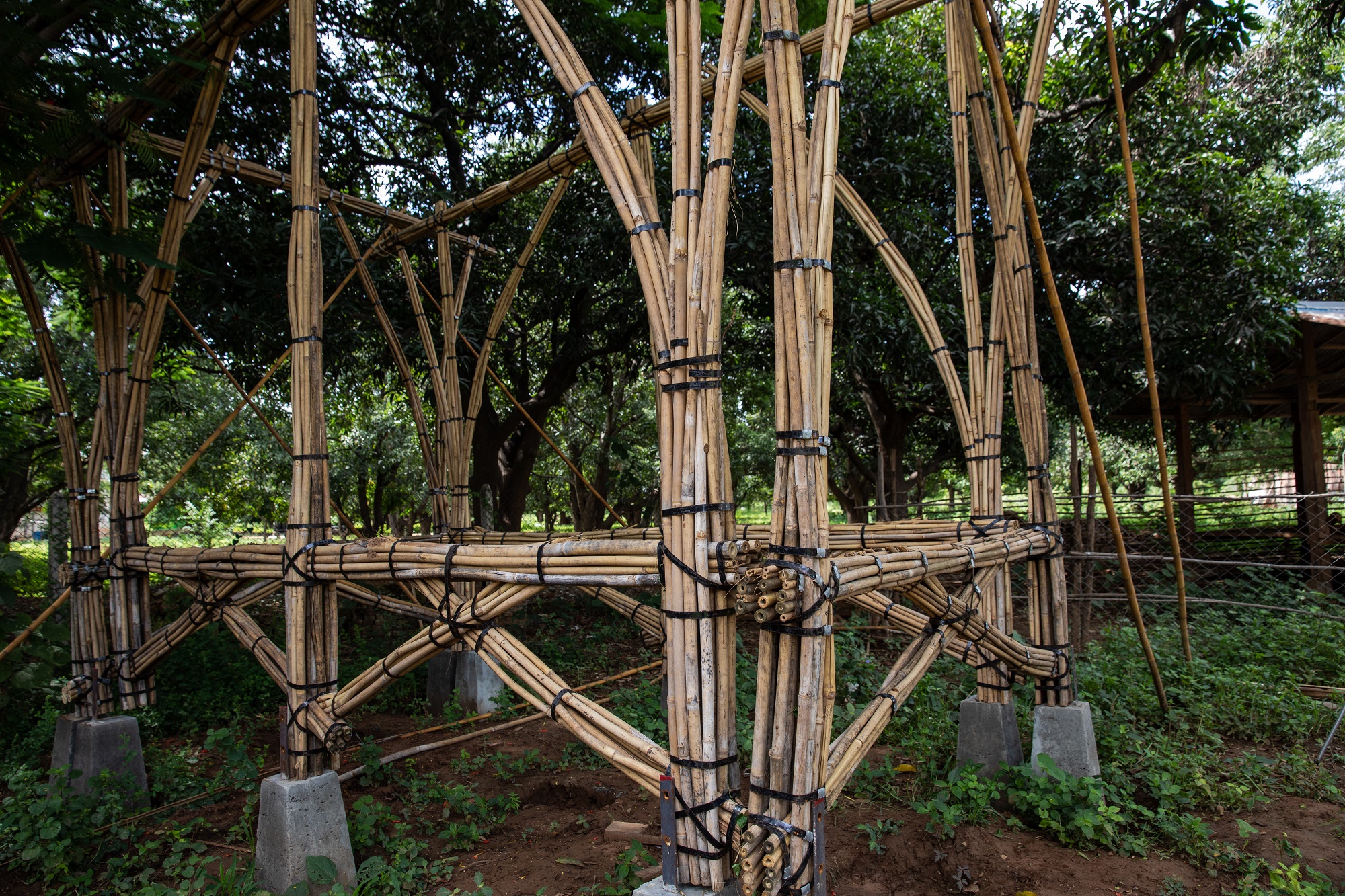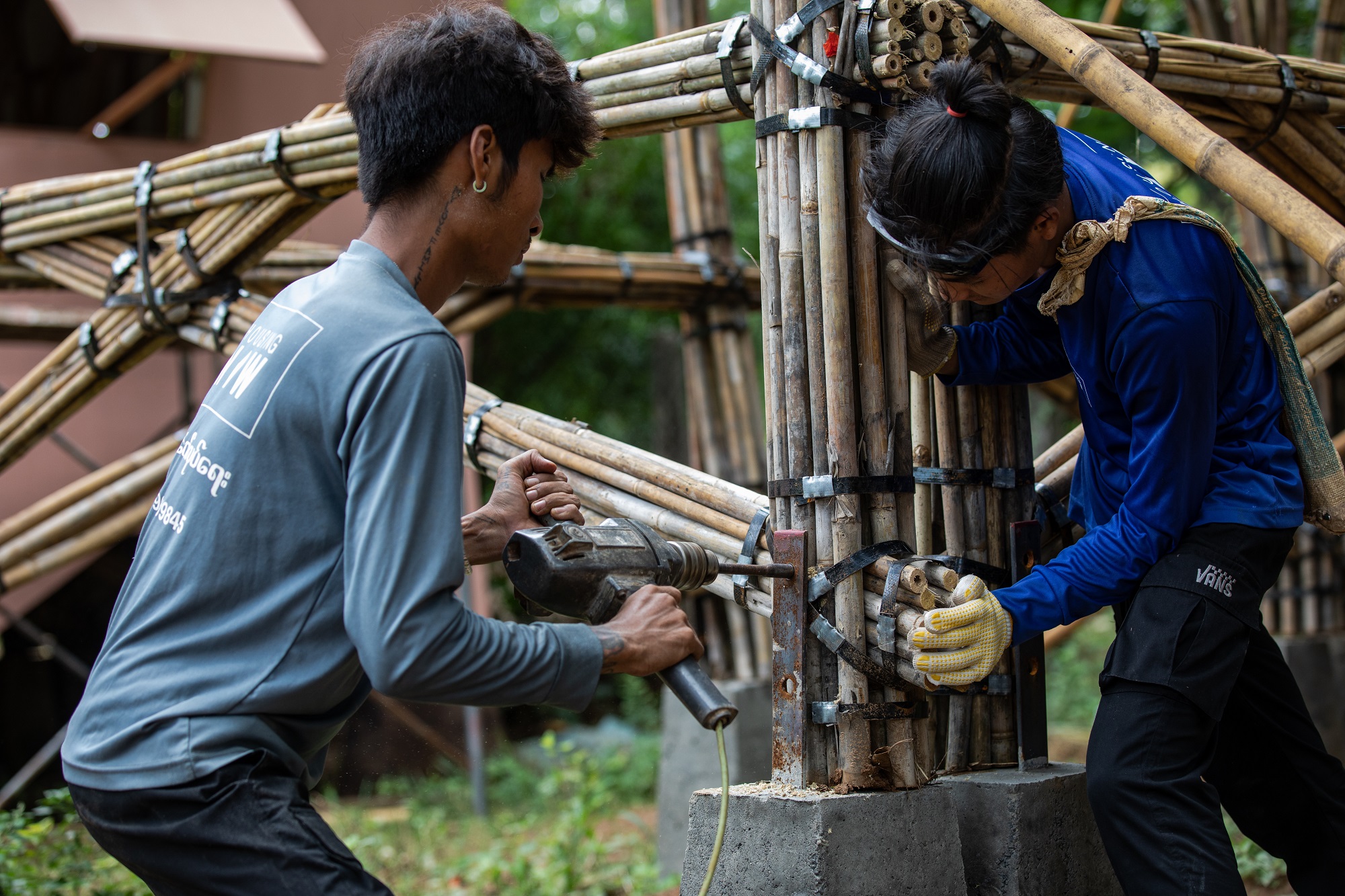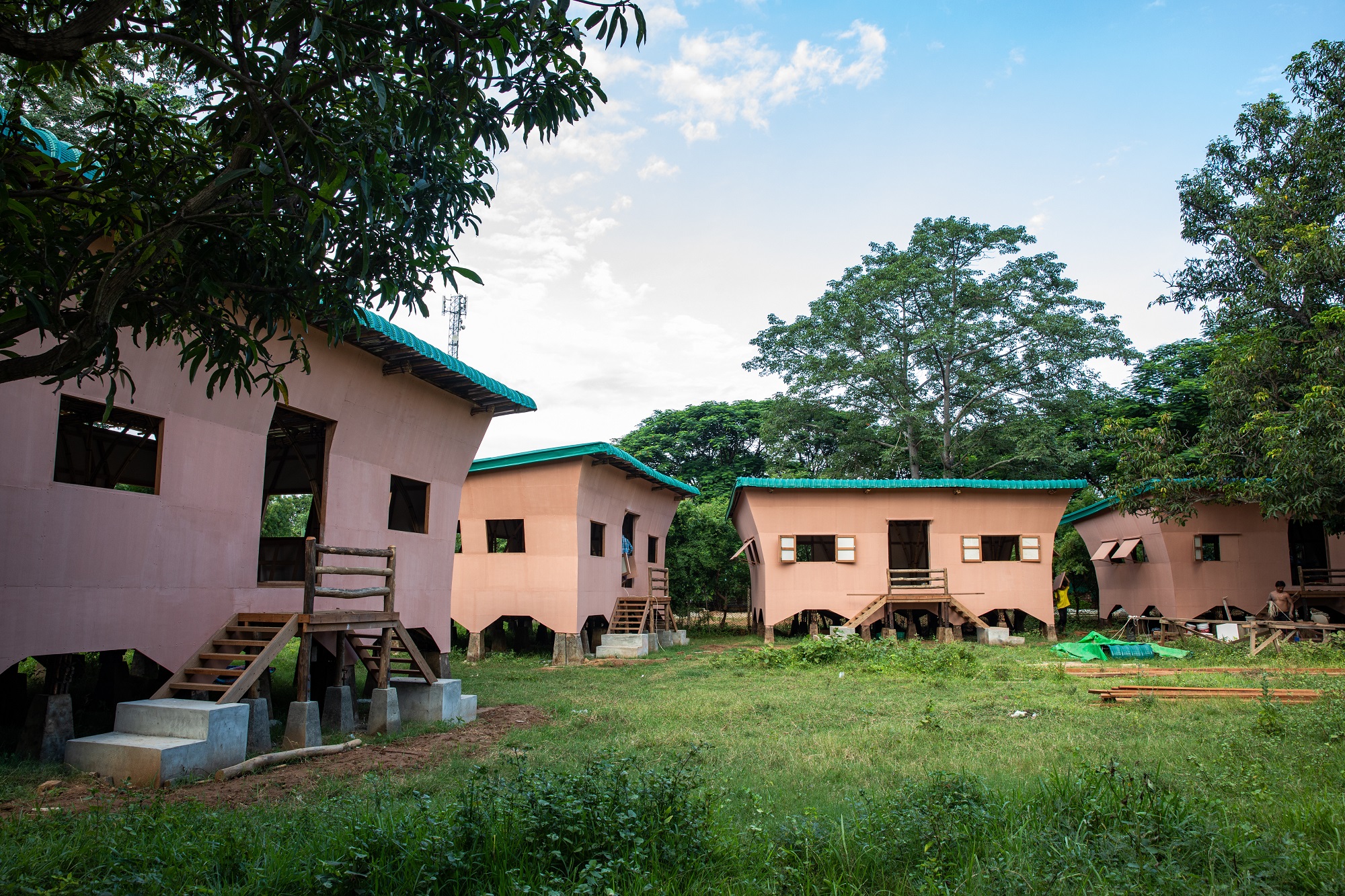Bamboo Housing Resists 7.7 Earthquake in Conflict-Torn Myanmar, Built for Displaced Families

Field-proven bamboo modular housing system delivers earthquake-resistant, low-cost homes for displaced families — at the price of a smartphone.
In March 2025, a 7.7 magnitude earthquake struck central Myanmar. The country’s second-largest city, Mandalay, was left in ruins. Before the earthquake, just 15 kilometers from the epicenter, 26 bamboo houses built by Housing NOW for families already displaced by conflict stood. Against the backdrop of overlapping crises, every house remained absolutely intact.
Each unit can be built in under a week for the price of a smartphone. The system relies on a highly innovative use of bundled small-diameter bamboo — a technique that transforms an undervalued, abundantly available species from local markets into a structurally interlocking frame.
Families take part in the assembly, guided by Housing NOW’s technical team, while the geometric system distributes seismic loads and allows variations in layout and façade.
The earthquake became the ultimate proof of concept: in one of the most fragile contexts on earth, bamboo housing delivered resilience and dignity at scale.
But Housing NOW is not limited to a single model. Over the past five years, the initiative has been testing three parallel strategies for housing in conflict-affected Myanmar: (1) bundled modular prefab housing, rapid and low-cost, now field-proven against both earthquakes and high-wind events; (2) the DIY Bamboo Manual, with 500 copies printed and distributed to help communities build autonomously with local tools and materials; and (3) an optimized cash-for-shelter approach, upgrading self-built homes by guiding families and carpenters with technical expertise and structural advice.
Together, these methods form a toolkit for dignified housing under crisis, adaptable to different regions, supply chains, and levels of community participation.
Technical sheet
– Official Project Name: Housing NOW
– Location: Mandalay, Myanmar
– Year: 2019–2025
– Architects/Designers: Blue Temple
– Construction manager: Ko Zin
– Project Type: Low-cost modular housing for internally displaced families
– Units Built: 79 units
– Construction Time: 7 days per unit
– Unit Cost: USD $1,000–$1,300 (the price of a smartphone)
– DIY Manuals Printed: 500 copies distributed nationwide
– Awards: MIT Solve (2023), Good Energies Prize (2023), UNICEF Innovation30 (2023), Nikkei Asia Award (2025)
– Photographers: Aung Htay Hlaing, Raphaël Ascoli
For more information: www.blue-temple.com/www.housing-now.org



